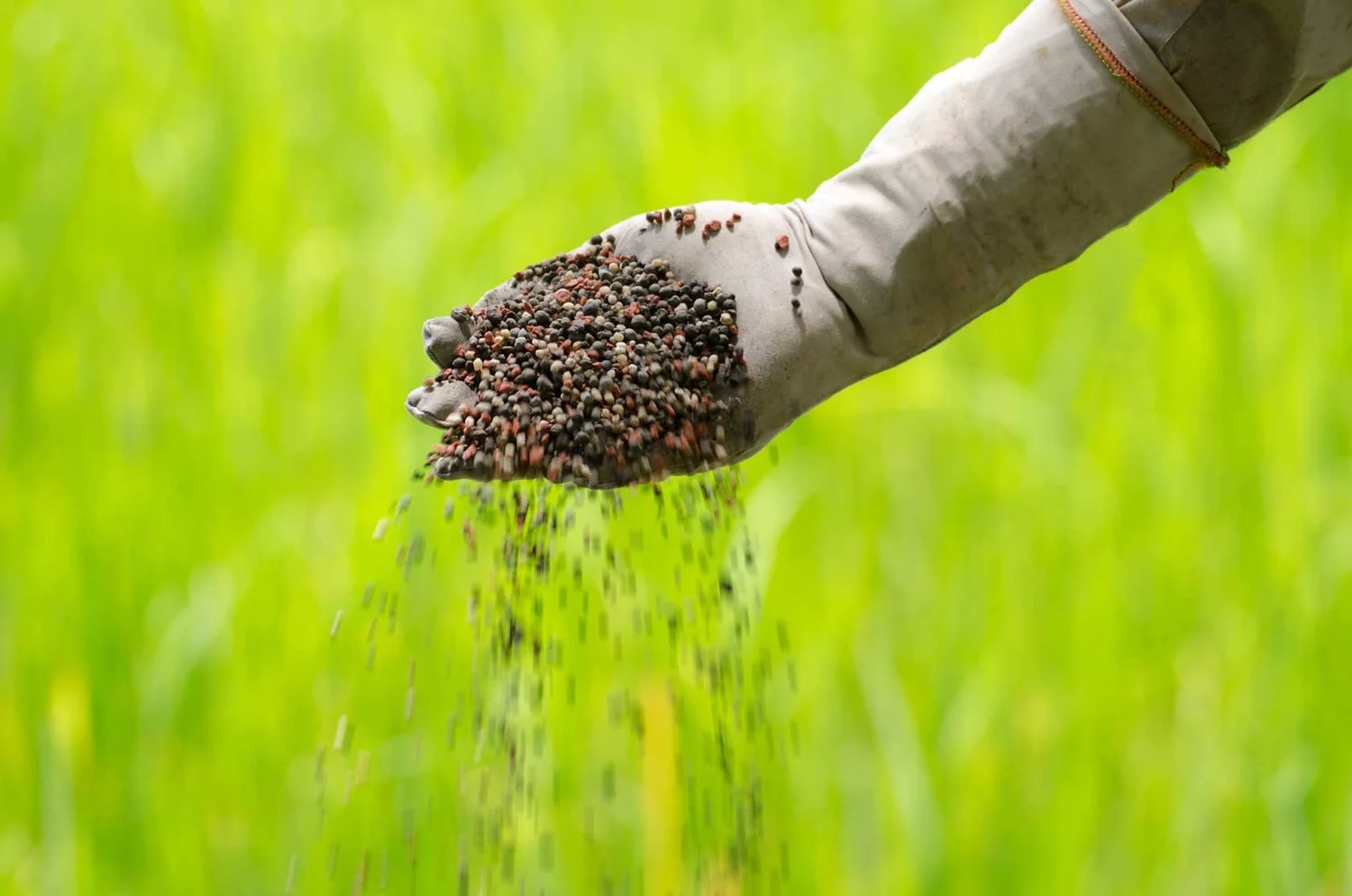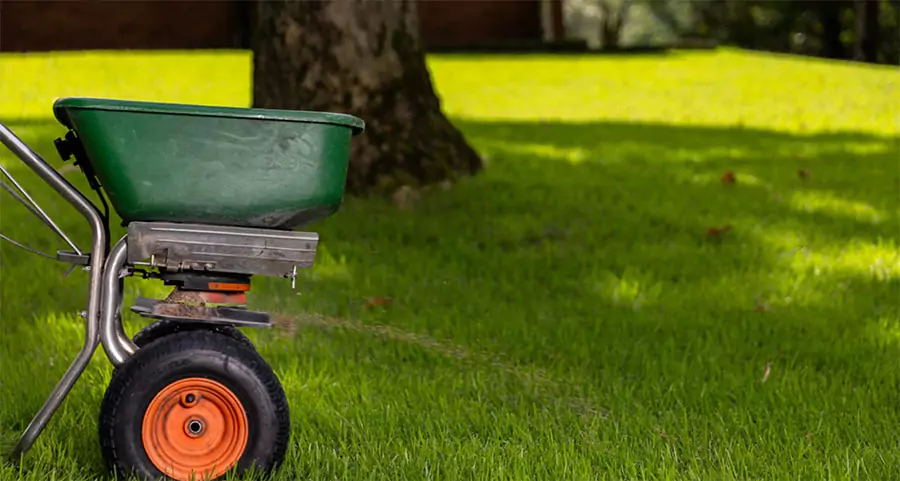Every year, thousands of Maryland homeowners face the same dilemma when it comes to fertilizing their lawns. They know their grass needs nutrients to stay thick and green, but the timing advice online seems to contradict itself. One website says March, another says May, and your neighbor swears by his July application schedule. Meanwhile, your lawn is looking more yellow than green, and you’re starting to worry you’ve missed the boat entirely.
Here’s the thing about Maryland – we’re sitting right in what lawn care professionals call the “transition zone.” We get the hot, humid summers of the South mixed with the cold winters of the North. This unique climate means that generic fertilization advice you’ll find online just doesn’t cut it for our lawns.
In this guide, we’re going to break down exactly when you should fertilize your lawn in Maryland, month by month. No more guessing, no more conflicting advice – just a straightforward schedule that works with our local climate and growing conditions.
Understanding Maryland’s Unique Climate for Lawn Care
Maryland sits right in the middle of what’s called the transition zone – that tricky area where cool-season and warm-season grasses both try to survive. Most of Maryland grows cool-season grasses like fescue and bluegrass, but some southern areas can support warm-season varieties like zoysia.
Our weather patterns are unpredictable. We might get a warm February followed by a cold snap in March, or a cool spring that suddenly turns blazing hot in May. These temperature swings affect when your grass starts growing, when it goes dormant, and when it can actually use the fertilizer you’re putting down.
The Complete Maryland Lawn Fertilization Schedule
Getting your timing right is everything when it comes to fertilizing in Maryland. Here’s the exact schedule that works with Maryland’s unique growing patterns:
Early Spring (March-April): The Pre-Emergent Window
- Apply when soil temperatures consistently hit 50-55 degrees
- Use pre-emergent fertilizer to feed grass and prevent crabgrass
- Watch for forsythia blooming – that’s your signal the window is closing
- Focus on balanced nutrition as grass wakes up from dormancy
Late Spring (May): The Growth Boost
- Perfect timing for higher-nitrogen fertilizer
- Grass is actively growing and temperatures are ideal
- Take advantage of spring rainfall for better nutrient uptake
- Avoid applying right before heavy rain forecasts
Summer (June-August): The Maintenance Phase
- Use slow-release, low-nitrogen fertilizer only if needed
- Many professionals skip summer fertilization entirely in Maryland
- Stressed grass can’t process nutrients properly in heat
- Risk of fertilizer burn is highest during these months
Fall (September-November): The Most Important Application
- Late September through October is the sweet spot
- Helps grass recover from summer stress
- Builds strong roots for winter survival
- Sets up thick spring growth for next year

Choosing the Right Fertilizer for Maryland Grass Types
Most Maryland lawns are tall fescue, fine fescue, or Kentucky bluegrass – all cool-season varieties that prefer balanced nutrition with slightly higher nitrogen in spring and fall. Look for fertilizer ratios like 20-10-10 or 24-6-12 for spring applications.
If you have warm-season grass like zoysia in southern Maryland, your timing shifts later. These grasses don’t wake up until late April or May, so you’ll fertilize from May through August instead.
The key is reading those N-P-K numbers on the bag. Nitrogen promotes green growth, phosphorus helps with root development, and potassium strengthens the plant overall. For Maryland’s climate, you generally want higher nitrogen in spring and balanced nutrition in fall.
Common Maryland Fertilization Mistakes to Avoid
Even well-intentioned Maryland homeowners make fertilization mistakes that can hurt their lawns. Understanding these common pitfalls can save you money and prevent lawn damage.
Over-fertilizing during summer heat is probably the most expensive mistake homeowners make. When temperatures hit the 80s and 90s, cool-season grass goes into survival mode and can’t process heavy nutrients. You’ll end up with fertilizer burn, brown patches, and a lawn that looks worse than when you started.
Another major mistake is ignoring soil test results or never getting one done. Maryland soils vary dramatically even within the same neighborhood. Some areas have acidic soil that locks up nutrients, while others might already be over-fertilized. Throwing fertilizer at a lawn without knowing what’s happening in the soil is just gambling with your grass.
Signs Your Maryland Lawn Needs Fertilization
Your lawn will tell you when it’s hungry – you just need to know what to look for. These visual cues help you determine if your fertilization timing is on track:
Visual Cues You Can Spot:
- Yellowing or pale green grass color instead of deep green
- Thin, sparse growth with bare spots showing through
- Grass that’s growing slower than usual for the season
- Weeds taking over because grass isn’t thick enough to compete
- Brown patches that aren’t related to disease or pests
Seasonal Indicators:
- Grass struggling to green up properly in early spring
- Lawn looking stressed or weak going into summer heat
- Poor recovery from summer dormancy in early fall
- Grass not thickening up despite good weather conditions
When to Call Professionals vs DIY:
- If you’re seeing multiple signs at once, professional soil testing helps
- Persistent problems despite following fertilization schedule
- Uncertainty about grass type or proper fertilizer ratios

Professional vs DIY Fertilization in Maryland
DIY fertilization can work for Maryland homeowners who have the time to learn their grass type, understand soil conditions, and stay on top of proper timing. If you enjoy lawn care and want to save money, the DIY route makes sense.
However, professional lawn care services bring local expertise that’s hard to replicate. They understand Maryland’s specific growing conditions, know which fertilizer blends work best in our climate, and can adjust timing based on actual weather patterns. Professional services also handle soil testing, identify pest and disease issues early, and use commercial-grade products that aren’t available to homeowners.
The cost difference isn’t as big as most people think when you factor in buying equipment, storing fertilizer properly, and replacing grass when DIY applications go wrong. For busy homeowners who value their weekends and want consistently great results, professional fertilization often provides better value.
Conclusion
Timing your fertilizer applications correctly in Maryland comes down to working with our unique transition zone climate. Focus on that critical fall application, don’t skip the early spring pre-emergent window, and resist the urge to over-fertilize during summer stress periods. Your grass will reward you with the thick, green lawn that makes neighbors stop and ask what your secret is.
Remember that every lawn is different, and what works for your neighbor might not work for your specific grass type and soil conditions. When in doubt, start with soil testing and consider working with a trusted Maryland lawn care company that understands our specific growing conditions. Whether you go DIY or professional, consistency with proper timing will always beat random fertilizer applications.
A healthy, well-fertilized Maryland lawn isn’t just about curb appeal – it’s about creating that outdoor space where your family can play, entertain, and enjoy our beautiful seasons. With the right fertilization schedule, you’ll have a lawn that stays green longer, recovers faster from stress, and gives you something to be proud of year after year.

Recent Comments